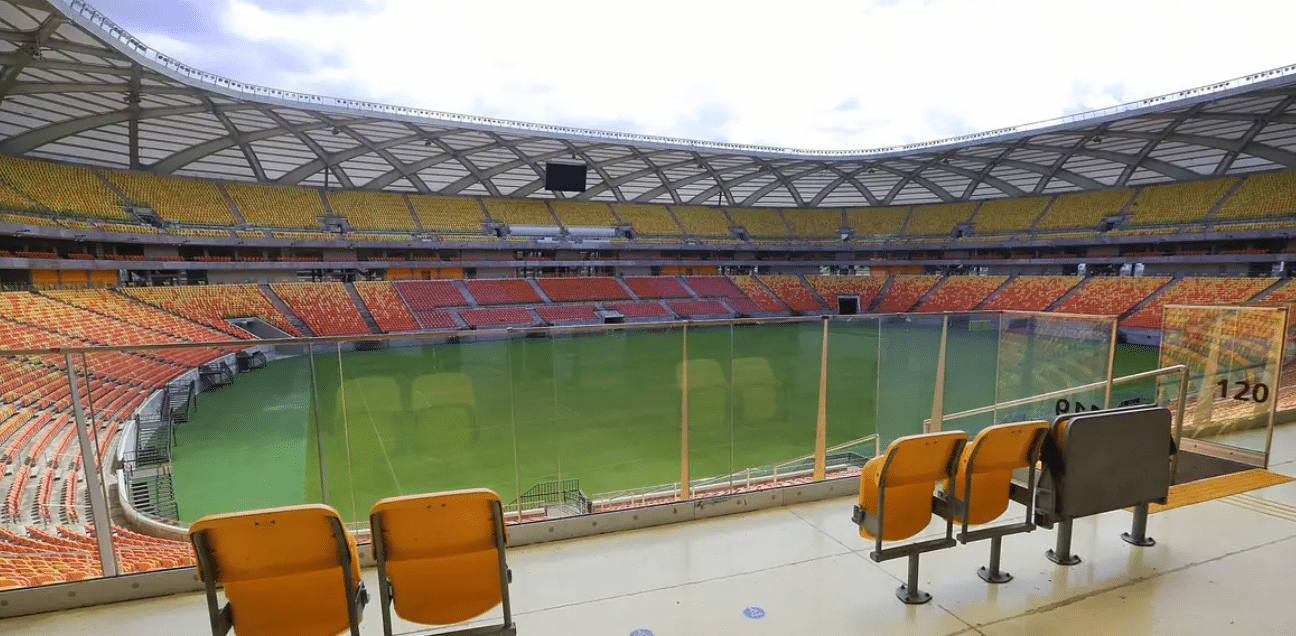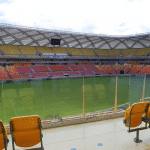The world cup stadiums curse is real—massive arenas built for sporting glory, then abandoned to decay.
From Brazil 2014 to Qatar 2022, host nations deliver architectural marvels, but the legacy often fades. Here’s how—and why—it matters more than you think.
Brazil’s Stadium Ghost Towns
In 2014, Brazil gutted billions into 12 new or revamped stadiums. One hit? Arena da Amazônia in Manaus—a $270 million stadium in the Amazon, designed for heat but not for post-tournament life.
Now local matches bring fewer than 1,000 fans, and it’s mostly used for concerts or evangelical talks.
More absurd: Brasília’s Estádio Nacional, built for nearly $1 billion, sits empty in a city with no top-tier home club. National pride turned into taxpayer burden.
Qatar’s Alleged Legacy vs. Reality
Qatar spent heavily—up to $200 billion overall—with around $6.5 billion just on stadiums. They promised legacy: dismantling Stadium 974, downsizing Lusail, repurposing others into hotels or clinics.
Reality check? Stadium 974 still sits intact in Doha. Plans haven’t kicked in. Most venues see only intermittent use through the local league—not the bustling community hubs promised.
Why the Stadium Curse Strikes
-
Overreach: Host cities want grand stages to signal prestige—but forget sustainable usage.
-
Location, location, location: Manaus and Brasília just don’t have club demand to justify 40,000-seat venues.
-
Maintenance costs: Giants like Maracanã fell into disrepair—missing turf, theft, vandalism, even shut-offs due to unpaid bills.
-
Broken promises: Qatar’s dismantling pledges haven’t materialized; Brazil’s “legacy” transit costs blew way past budgets.
What’s Next?
If we don’t break the stadium cycle, the world cup stadiums curse keeps haunting hosts. The next World Cups—like 2030—must demand modular designs, multi-use planning, and retrofittable spaces.
Or these monuments will stay gleaming until they become ghosts.
What About the 2026 North America World Cup?
The 2026 World Cup is going to be massive—hosted across USA, Canada, and Mexico, with 48 teams and 104 matches. But will it avoid the World Cup stadiums curse?
The Good News:
-
Most of the stadiums already exist. The U.S. is using NFL stadiums (like MetLife, SoFi, AT&T) with giant capacity and modern infrastructure.
-
Canada and Mexico have fewer venues, but BMO Field and Estadio Azteca already host regular football.
The Risk:
-
These aren’t purpose-built stadiums, but the cost of retrofitting (especially grass installation for NFL stadiums) is already skyrocketing.
-
U.S. stadiums may not remain FIFA-friendly long term—once it’s over, will any of them support MLS or national soccer growth?
-
Cities are investing millions in upgrades, training facilities, and transport—but who benefits long term?
Unless organizers actively plan for sustainable football ecosystems, the curse could strike again, even without building new white elephants.
TL;DR
-
World Cup stadiums curse: epic builds, zero post-event life.
-
Brazil (2014) wasted money. Qatar (2022) stall on legacy.
-
Climate, location, and finance decide whether a stadium becomes a home or a hole.
Read more – Inside the Enhanced Games: The ‘Super Olympics’ Where Anything Goes













